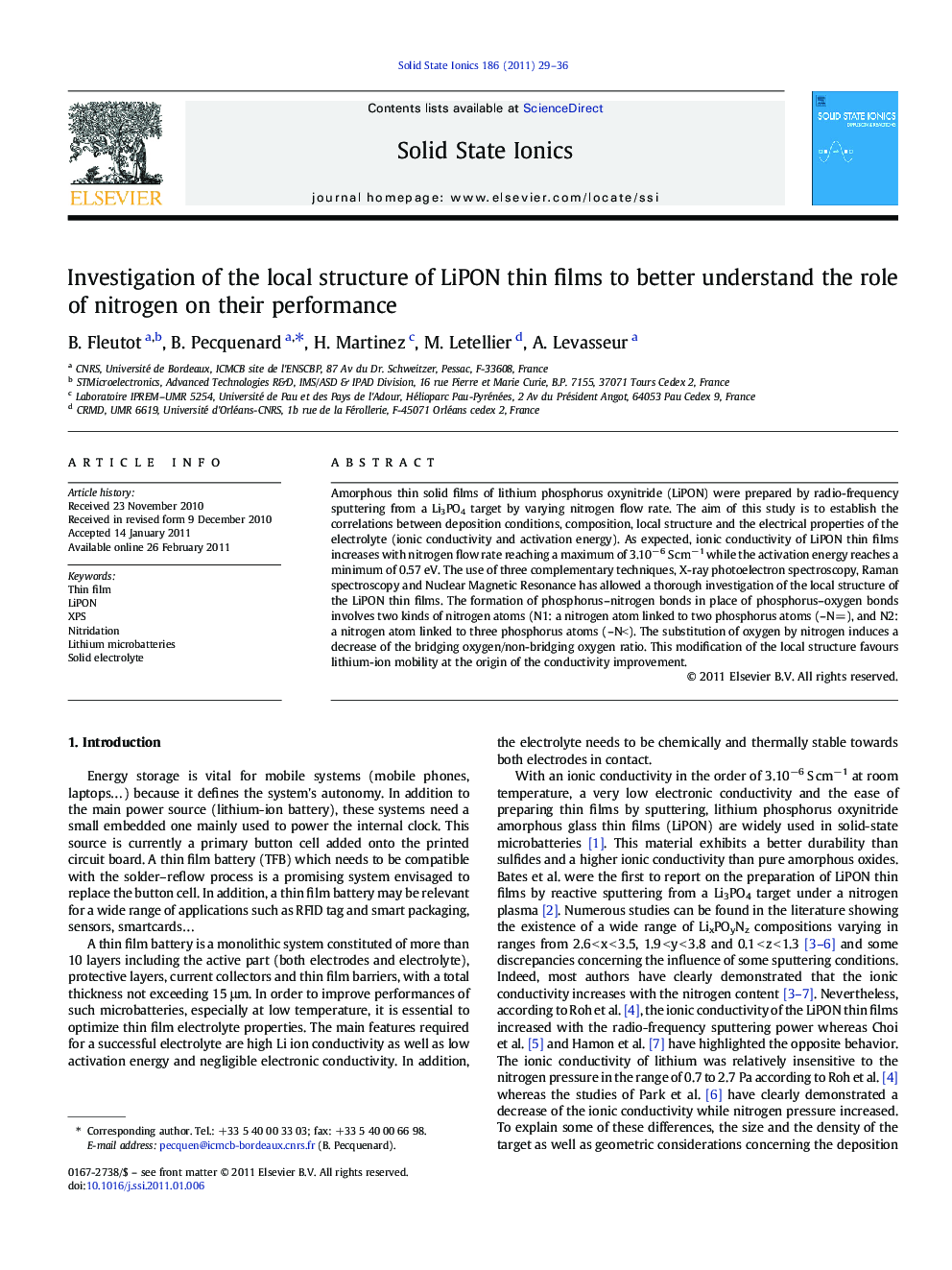| Article ID | Journal | Published Year | Pages | File Type |
|---|---|---|---|---|
| 1298299 | Solid State Ionics | 2011 | 8 Pages |
Amorphous thin solid films of lithium phosphorus oxynitride (LiPON) were prepared by radio-frequency sputtering from a Li3PO4 target by varying nitrogen flow rate. The aim of this study is to establish the correlations between deposition conditions, composition, local structure and the electrical properties of the electrolyte (ionic conductivity and activation energy). As expected, ionic conductivity of LiPON thin films increases with nitrogen flow rate reaching a maximum of 3.10−6 S cm−1 while the activation energy reaches a minimum of 0.57 eV. The use of three complementary techniques, X-ray photoelectron spectroscopy, Raman spectroscopy and Nuclear Magnetic Resonance has allowed a thorough investigation of the local structure of the LiPON thin films. The formation of phosphorus–nitrogen bonds in place of phosphorus–oxygen bonds involves two kinds of nitrogen atoms (N1: a nitrogen atom linked to two phosphorus atoms (–N=), and N2: a nitrogen atom linked to three phosphorus atoms (–N<). The substitution of oxygen by nitrogen induces a decrease of the bridging oxygen/non-bridging oxygen ratio. This modification of the local structure favours lithium-ion mobility at the origin of the conductivity improvement.
► Correlations between deposition conditions and properties of LiPON thin films. ► The ionic conductivity of thin films increases with nitrogen flow rate. ► The substitution of oxygen by nitrogen induces a decrease of the BO/NBO ratio. ► Two kinds of nitrogen atoms are created. ► The improvement of conductivity is attributed to a higher lithium ions mobility.
